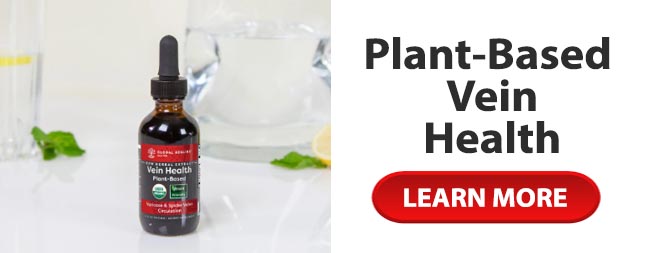Varicose veins are unsightly and uncomfortable. They affect both men and women and appear to have a genetic predisposition. In other words, if you have family members that suffer from varicose veins, you will also probably have weak valves and have the same experience.
Varicose veins occur when the one way valves that stop blood from pooling in the feet are damaged. When the blood leaves the heart it is pumped throughout the body by the force of the heart muscle. When it comes to the end of the route and has delivered all of the oxygen available, it turns around and heads for home, the heart and lungs. On the return trip there is no heart muscle to pump the blood back against gravity. Instead, there are a series of one-way valves in the venous system that work with muscle contraction to force the blood through the legs, up to the inferior vena cava which then delivers the blood to the heart and lungs.
This particular system is called the venous pump. The pump part of this system works through muscle contraction in the lower legs and thighs. When the muscle strength has been decreased for any reason it can cause pooling of the blood in the lower extremities. People may notice some swelling in their feet and legs after having stood for several hours during the day. This is a result of the blood not returning in an effective and efficient manner to the heart.
Researchers know the types of things that can cause damage to the venous valves and trigger the development of varicose veins. By avoiding these triggers you can also help to prevent the development of any varicose veins or help to decrease the progression of the ones you already have.
One of the biggest factors is weight, in a combination with other criteria. For this reason, those who are overweight, obese or put on a significant amount of weight in a short period of time will find that they are more prone to varicose veins. Individuals who are overweight will also find that by losing weight they reduce their risk and decrease the progression of the disease they may already have. Women who are pregnant may find that they are at an increased risk for developing varicose veins but that these veins may resolve after the baby has been born.
There are several ways of reducing the risk of developing varicose veins, including weight loss. Individuals who find that they sit or stand for several hours during the day also increase their risk of developing varicose veins because of the lack of muscle contraction in the lower extremities which drives the venous blood back to the heart.
If your job entails long periods of time sitting or standing, it is important to reduce your risk by getting up and moving around several times an hour. People who are in a position of traveling in planes or cars for long periods of time will find that contracting and relaxing their calf muscles, ankles and feet every 10 minutes will also help to reduce their risk.
Many individuals have found that doing calf raises, or rising up onto their toes, while in the standing position will help to reduce their risk of varicose veins. Women who are pregnant who must stay in a standing position can also rest their venous system and lower back by alternately placing one leg and then another on a short stool or box.
When seated for any length of time it is important not to cross your legs at the knees. Doctors believe that this also helps to increase the pooling in the lower extremities and cuts off the return route for the venous blood to the heart and lungs.
Consistent and regular exercise helps to increase the muscle strength in the lower extremities and therefore keep the venous pump working throughout the day. Walk for just a mile and a half every day, rain or shine, will help to reduce your risk or the progression of any disease you may already have.
Even if you do not have a genetic predisposition to the development of spider veins or varicose veins it is helpful to perform these minor preventative measures in order to reduce your overall risk and improve your health.

